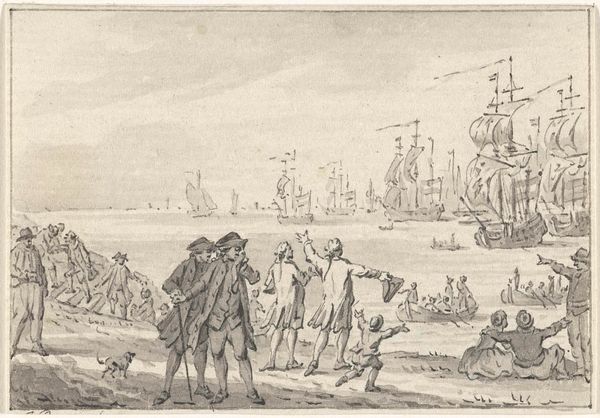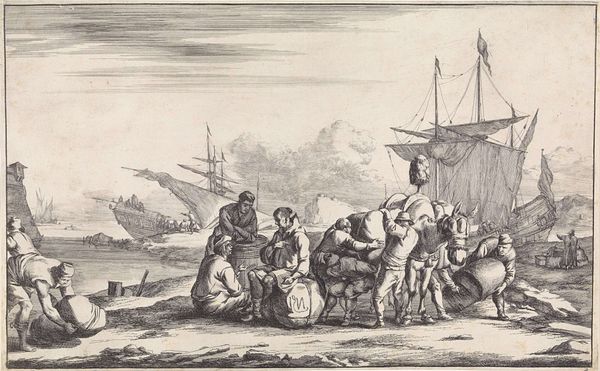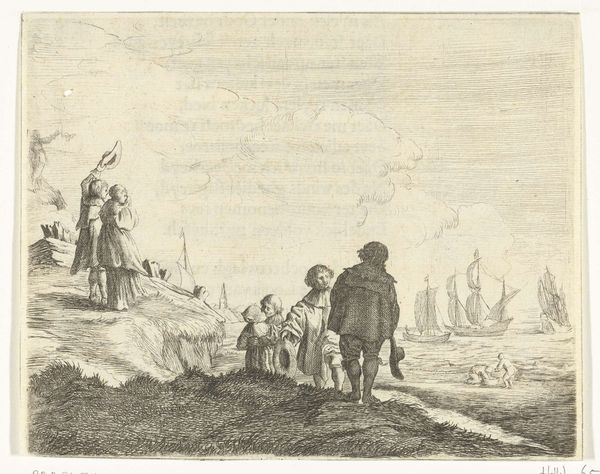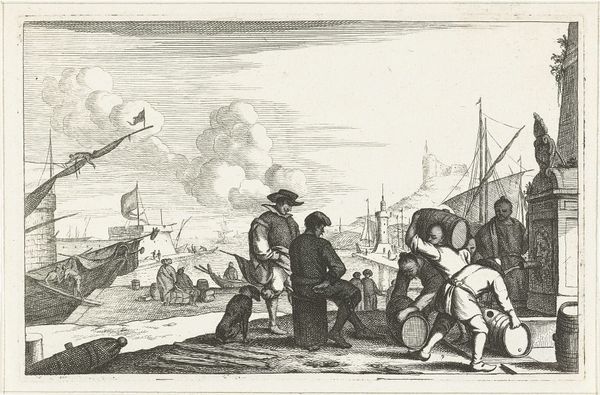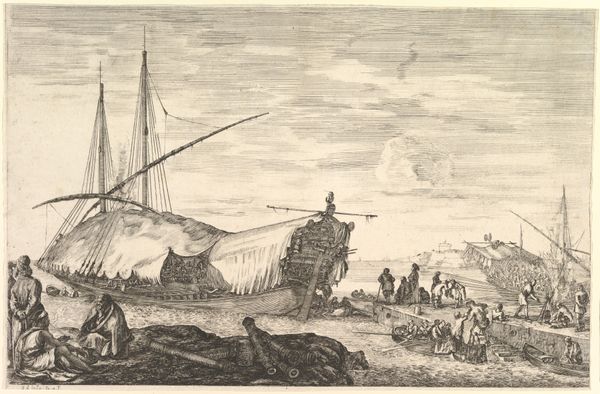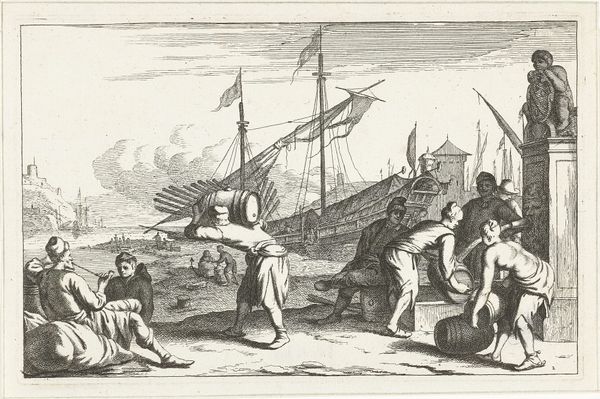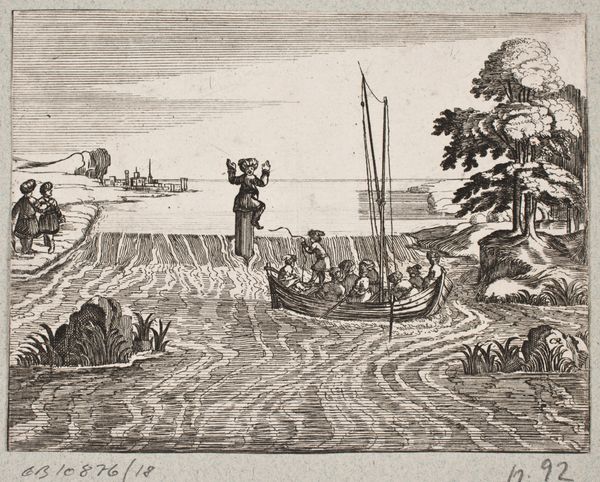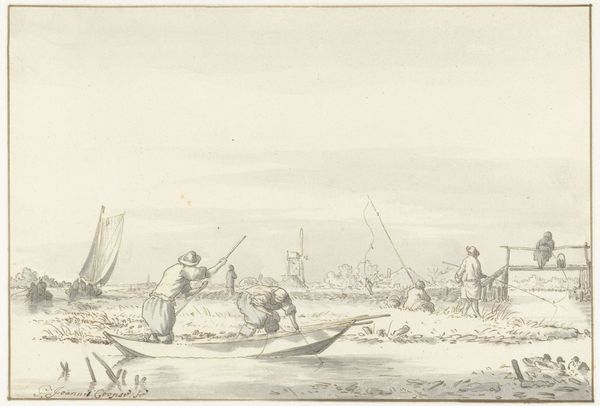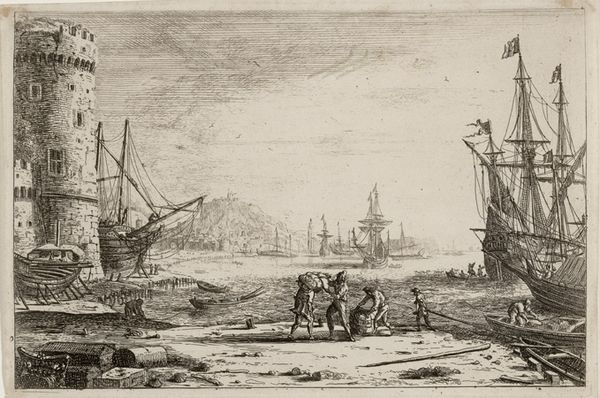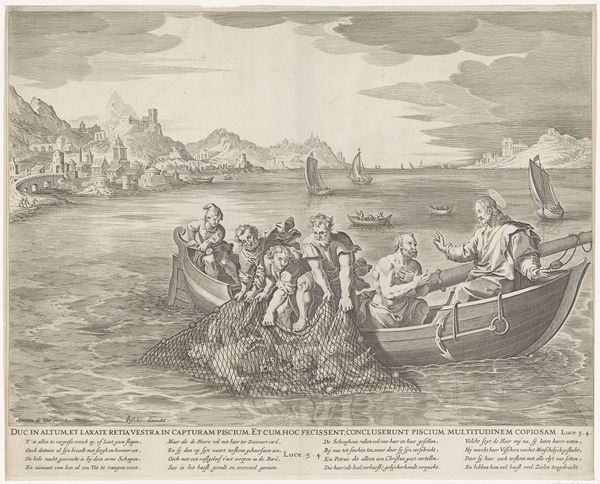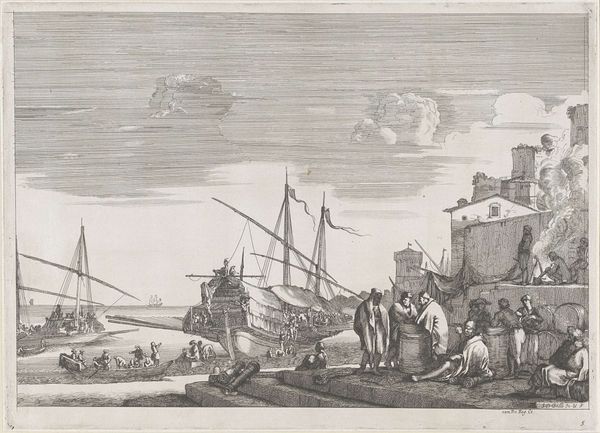
print, engraving
#
dutch-golden-age
# print
#
landscape
#
cityscape
#
genre-painting
#
history-painting
#
engraving
Dimensions: height 235 mm, width 373 mm
Copyright: Rijks Museum: Open Domain
Curator: Let's turn our attention to "Haven met ruïne van een toren," or "Harbor with a Ruined Tower," an engraving created by Anthony van Zijlvelt sometime between 1650 and 1695. What are your initial thoughts? Editor: It feels like a moment suspended between activity and stillness. All these figures scattered across the scene, some working, some resting, create a very particular tension. I'm struck by the visual weight given to the ruin – it dominates the horizon. Curator: Indeed. In its ruin, that tower signifies a shift in power structures, perhaps reflecting on the transience of empire. Dutch Golden Age art often juxtaposed grand ambition with reminders of mortality. This port scene is filled with symbols related to global trade. The labor occurring in the foreground directly contrasts the derelict architectural remnants, symbolizing the new world supplanting the old. Editor: Yes, it also makes me consider the symbolism of harbors in general. A liminal space, constantly receiving and releasing. Beyond trade, what other societal implications does that traffic represent here, in terms of human migrations? The visual motifs associated with ships – adventure, peril, opportunity... Curator: Absolutely. Looking closer, we can read the print’s intricate detail as revealing an entire network of economic exchange dependent on exploitation and displacement. Notice how some figures appear to be of diverse origins. Van Zijlvelt may well be referencing increased globalization through Dutch maritime power, but also subtly questioning its human costs through composition and detail. Editor: Right. Consider, for example, the central placement of the cooking fire, which evokes safety and the very foundational need for community. However, the dark smoke seems like a looming threat, even a symbolic indicator of destruction, set against the background ruin, amplifying feelings of vulnerability amid maritime adventure. The ruin also signifies an interesting cultural continuity with a pre-modern identity, against a burgeoning global market. Curator: This piece provides an early critique of burgeoning capitalist ambitions as well as marking a cultural shift with far reaching impact. I’ll be chewing on that tension between continuity and change for quite some time! Editor: Agreed, a remarkable piece that allows us to navigate ideas of ruin, resilience and community amid societal upheaval.
Comments
No comments
Be the first to comment and join the conversation on the ultimate creative platform.

